






 |
|||||||
 |
 |
 |
 |
 |
|||
 |
|||||||
|
A Brief Overview of Rectifier Tubes "A rectifier is an electrical device that converts alternating current (AC), which periodically reverses direction, to direct current (DC), which flows in only one direction." --Wikipedia Rectifiers are some of the most interesting, and controversial, tubes in hifi. There is a school of thought that rectifier tubes cannot influence the sound of an amplifier, but in my experience this is false. In fact, changes in the rectifier tubes can sometimes have a more profound influence on the sound quality than changes to power or input tubes. Over the years I’ve gathered up one or two samples of many of the rectifier tube types, and here are a few of the best samples from my collection. |
||||||||||||||||||
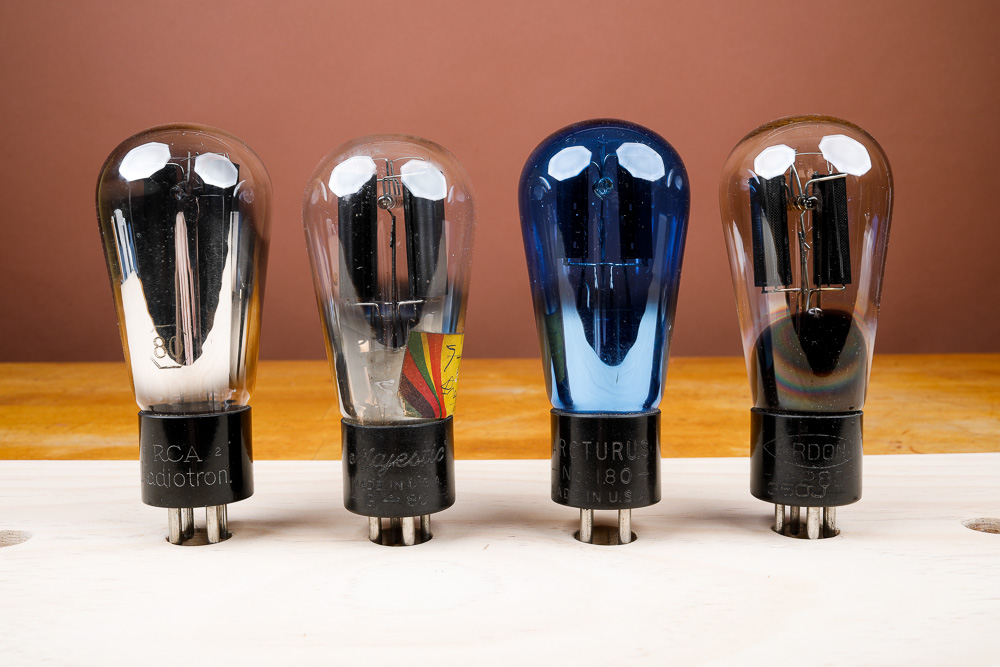
|
||||||||||||||||||
|
The Type 80 Globe. Here are a lovely collection of Type 80 globe tubes. This very early tube type dates to 1927 and was used in countless early radio sets. These are some of my favorite tubes in the collection, and are my first choice for rectification if available on the amp in question. These always sound very good and in my experience have been durable, long lasting tubes. Anywhere a 5Y3 works, I use an 80 on an Octal/UX adapter. Spec sheets for the 80 can be found here: here. |
||||||||||||||||||
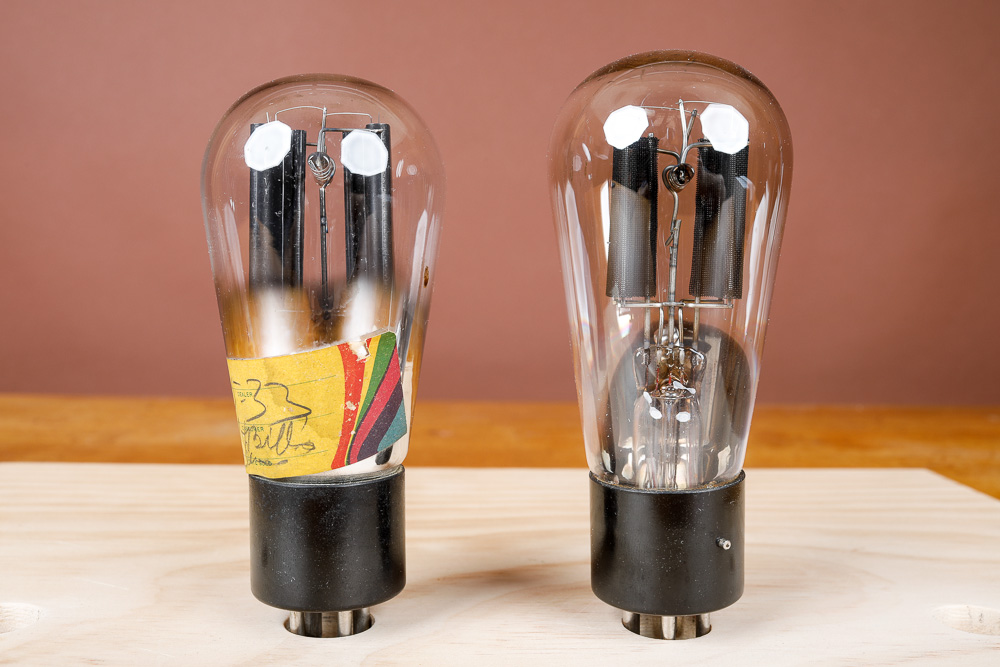
|
||||||||||||||||||
|
The Type 80 Globe. A Majestic 80 and a Cardon mesh plate 80. |
||||||||||||||||||
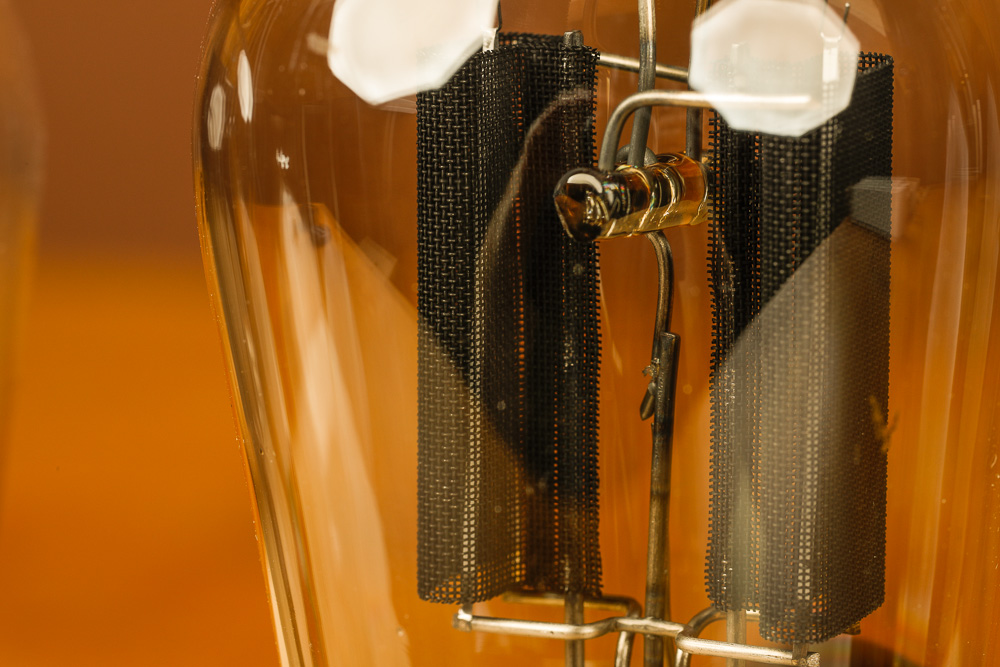
|
||||||||||||||||||
|
The Type 80 Globe. A close-up of the mesh plates on the Cardon 80. Woven mesh material really seems to have disappeared in tube manufacture by the early 1930s. Likely the intensive hand work involved was just too expensive. The mesh does lend a certain something to the tube's sound signature. Of course this would have been completely unknown in its time period when hifi was a narrow mid-band and not much more. Strange that this tube needed to wait 100 years to be really appreciated for what it is. |
||||||||||||||||||
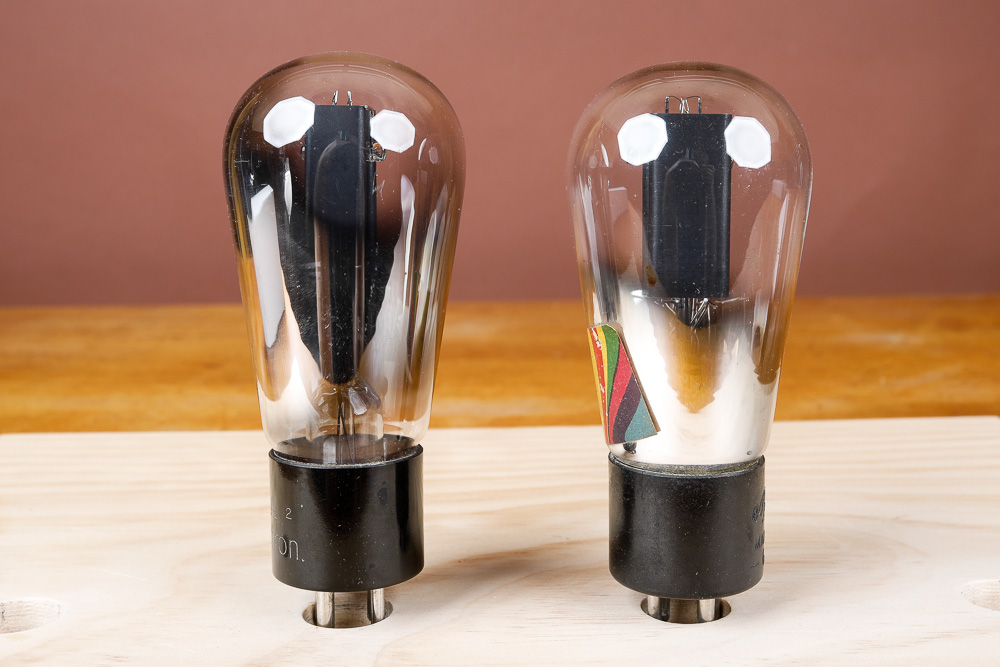
|
||||||||||||||||||
|
The Type 80 Globe. An RCA Radiotron 80 and a Majestic 80. Notice the size of the Majestic tube's plates, nearly twice as big. For some reason Majestic made these tubes massive. |
||||||||||||||||||
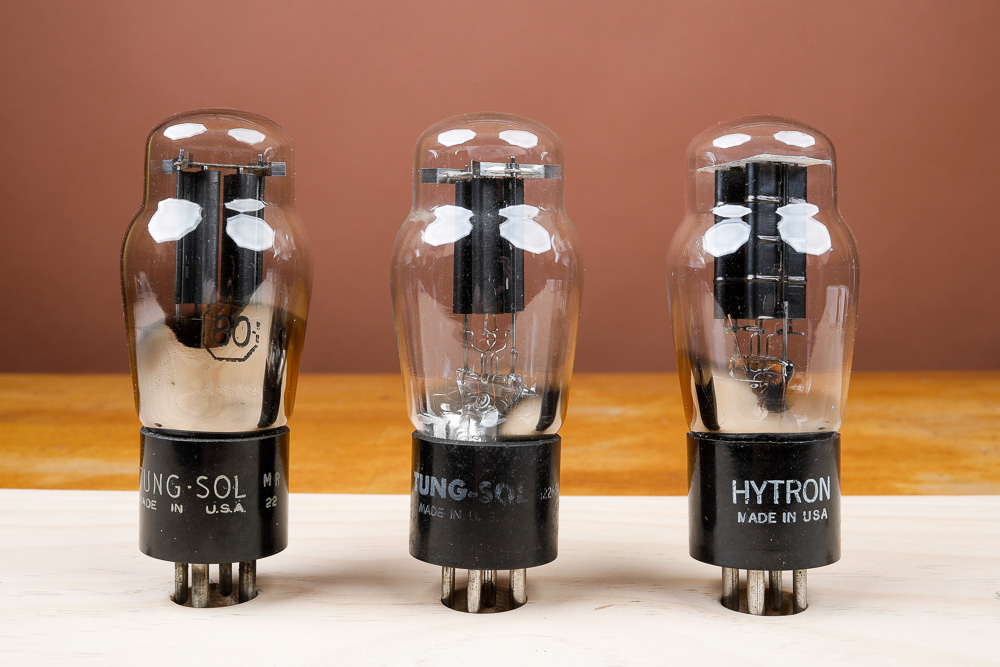
|
||||||||||||||||||
|
Type 80. Here are a selection of later production 80 tubes. The ST shape came along in 1934 or so, but some of these may date to the 1950's, as the Type 80 was made for a long time in support of the numerous older 80 equipped radios still out in use. This is often a very good tube as well. |
||||||||||||||||||

|
||||||||||||||||||
|
The 5Y3. As time went by the 4 pin UX base that the 80 was built around went out of style in favor of the newer Octal base, and the Type 80 evolved into the 5Y3. Here we have a small selection of 5Y3 tubes by RCA, Sylvania, Raytheon, WU and the amazing Bendix 5852. These are great audio rectifiers. Spec sheets for the 5Y3 can be found here: here. |
||||||||||||||||||
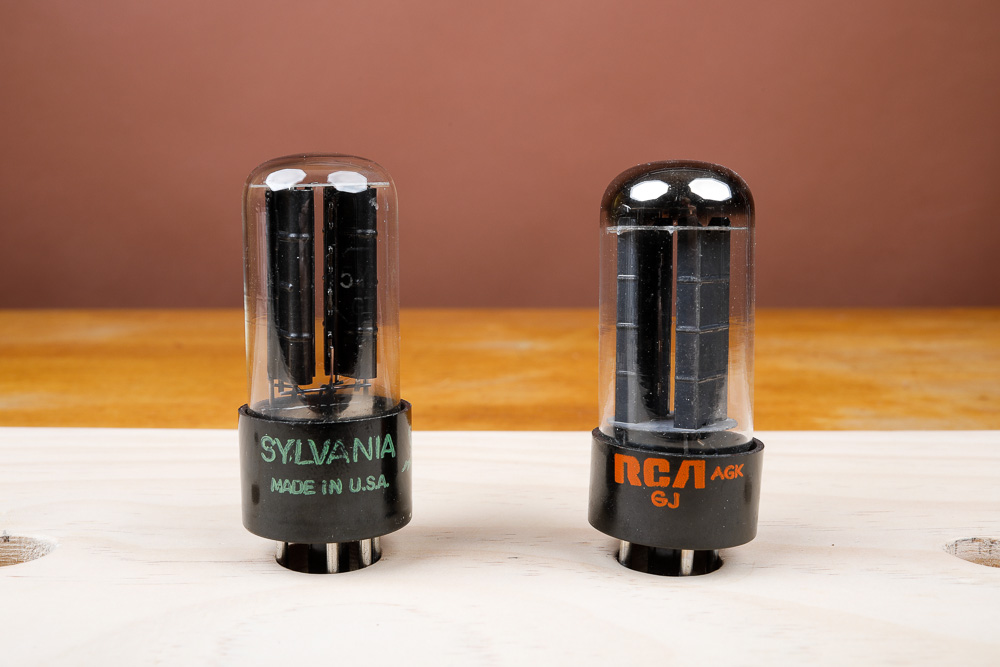
|
||||||||||||||||||
|
The 5Y3. RCA and Sylvania 5Y3. |
||||||||||||||||||
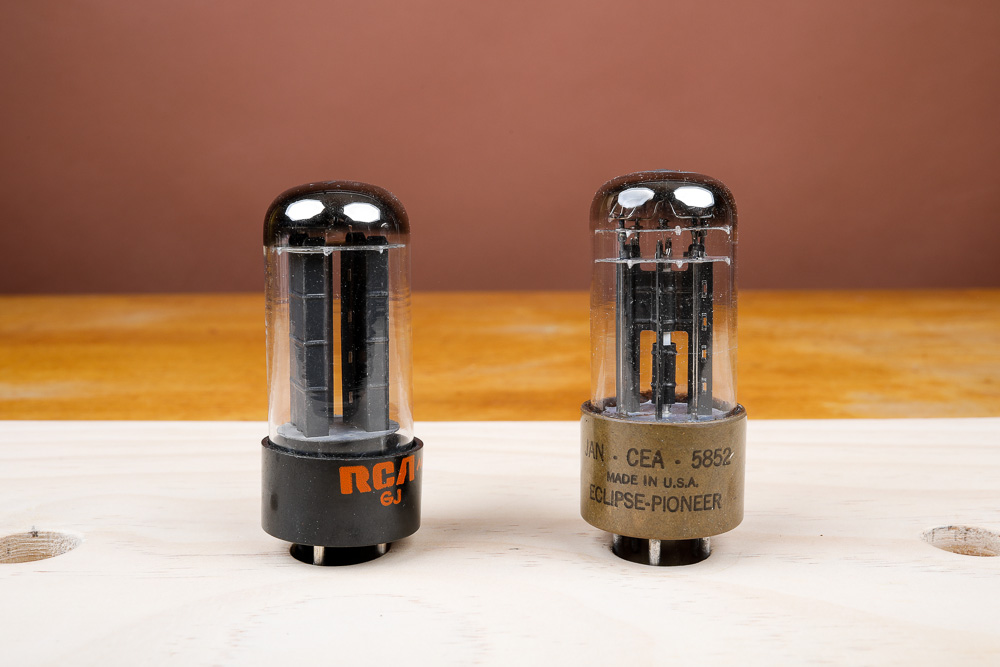
|
||||||||||||||||||
|
The 5Y3. A comparison of RCA and Bendix Red Bank. |
||||||||||||||||||
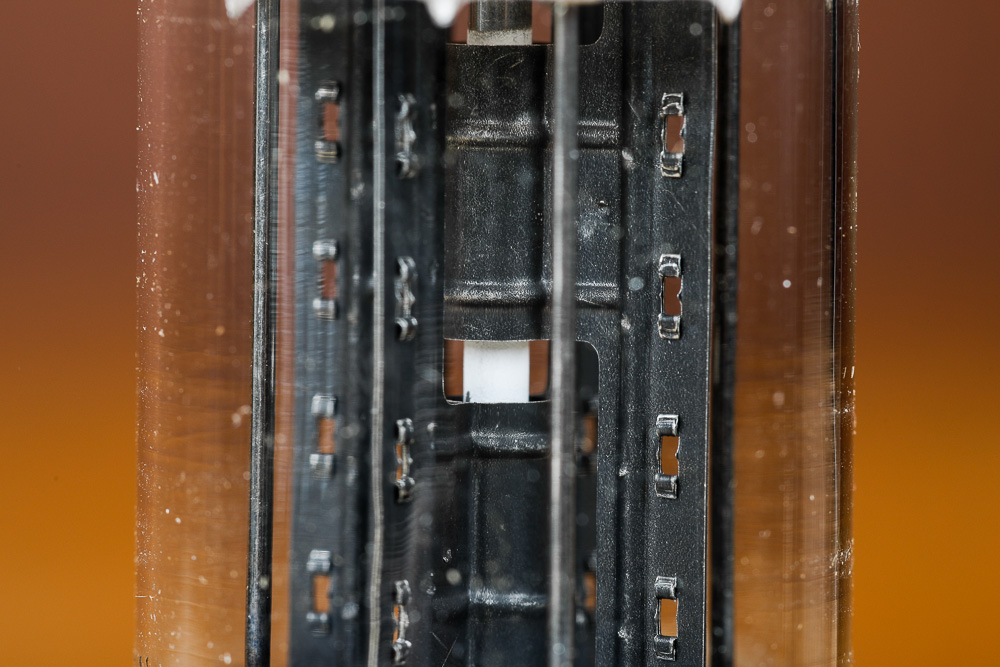
|
||||||||||||||||||
|
The 5852. Lots of over-construction! |
||||||||||||||||||
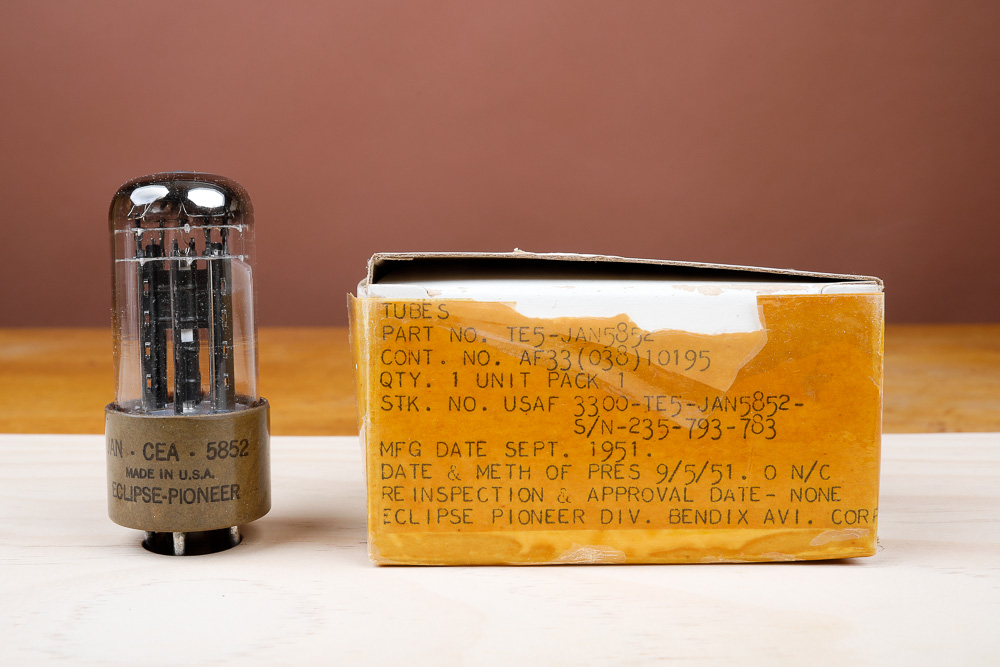
|
||||||||||||||||||
|
The 5852. This Bendix tube was made for the early Eclipse Pioneer division circa 1951. Very cool stuff. During the Cold War, the US Air Force commissioned some of the most amazing tubes ever conceived and built. Intended for use in a high G-force environment, like a missile or a jet fighter, the Bendix is just completely overbuilt with 4 pillars, three micas and a ceramic shield for the heater. The ultimate rectifier, literally made for Doomsday. Imagine how much Uncle Sam paid for each of these units. |
||||||||||||||||||
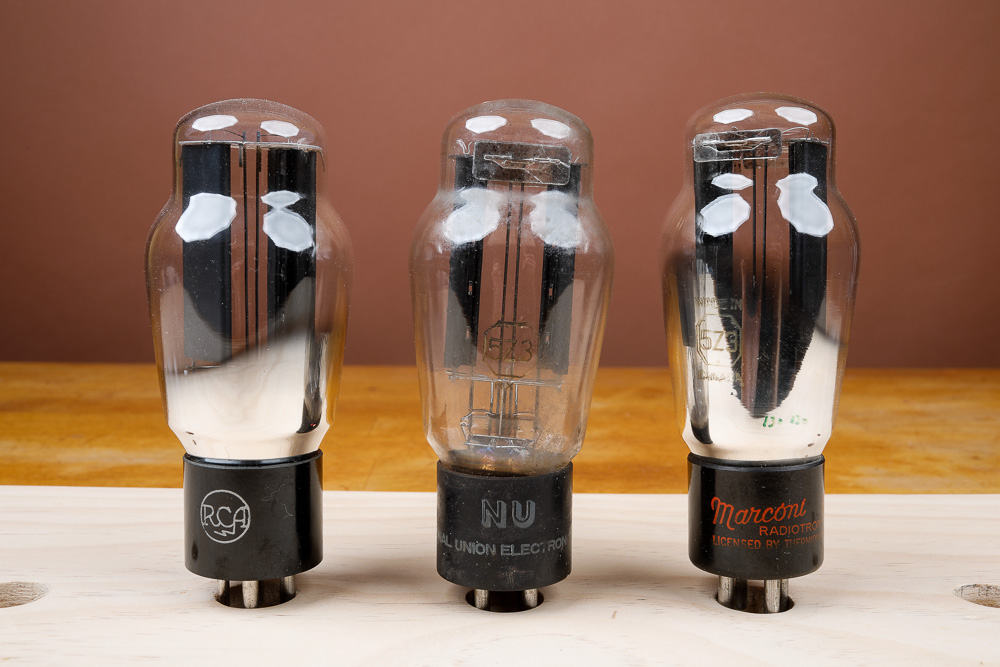
|
||||||||||||||||||
|
The 5Z3. An assortment of 5Z3 tubes. These are good early rectifiers, dating back to 1932. These are robust, well built tubes, and I've chosen the Marconi 5Z3 over quite a number of other suitable rectifiers in direct comparison. Spec sheets for the 5Z3 can be found here: here. |
||||||||||||||||||
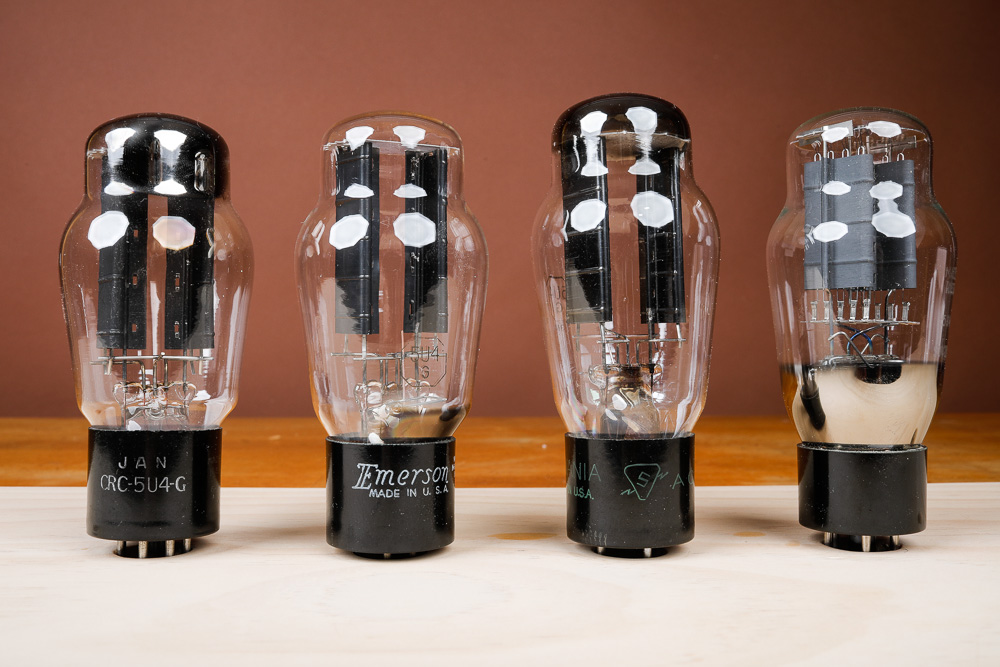
|
||||||||||||||||||
|
The 5U4. The 5U4G, an octal based direct replacement for the 5Z3. These earlier G tubes are still in the "coke bottle" envelopes. These are great tubes, they sound good and are well built. First is an RCA built JAN tube followed by an Emerson labeled tube, probably by Sylvania, next is a Sylvania and last is a modern tube, a Sovtek 5U4G. The new Sovtek is quite a bit more robust looking. Spec sheets for the 5U4 can be found here: here. |
||||||||||||||||||
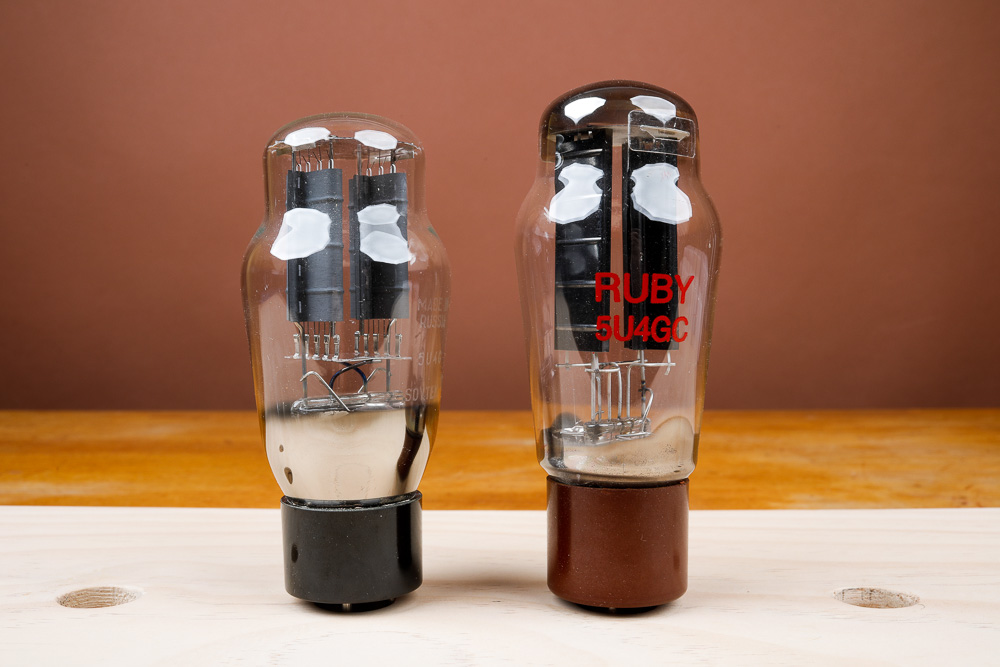
|
||||||||||||||||||
|
The 5U4. Here are two modern 5U4G tubes, a Sovtek and a Ruby. |
||||||||||||||||||

|
||||||||||||||||||
|
The 5U4. The workhorse 5U4, the straight bottled tube of the 1950's onward. Some of these are bad-ass tubes. Here are a Sylvania and an RCA. Typically, the Sylvanias tend to be taller with narrower plates, while the RCA manufacture were stouter with wide plates. You’ll find these tubes with every label under the sun. |
||||||||||||||||||

|
||||||||||||||||||
|
The 5U4. 5U4 and their packaging from some of the biggest names in tubes, circa 1940's-1960's. |
||||||||||||||||||
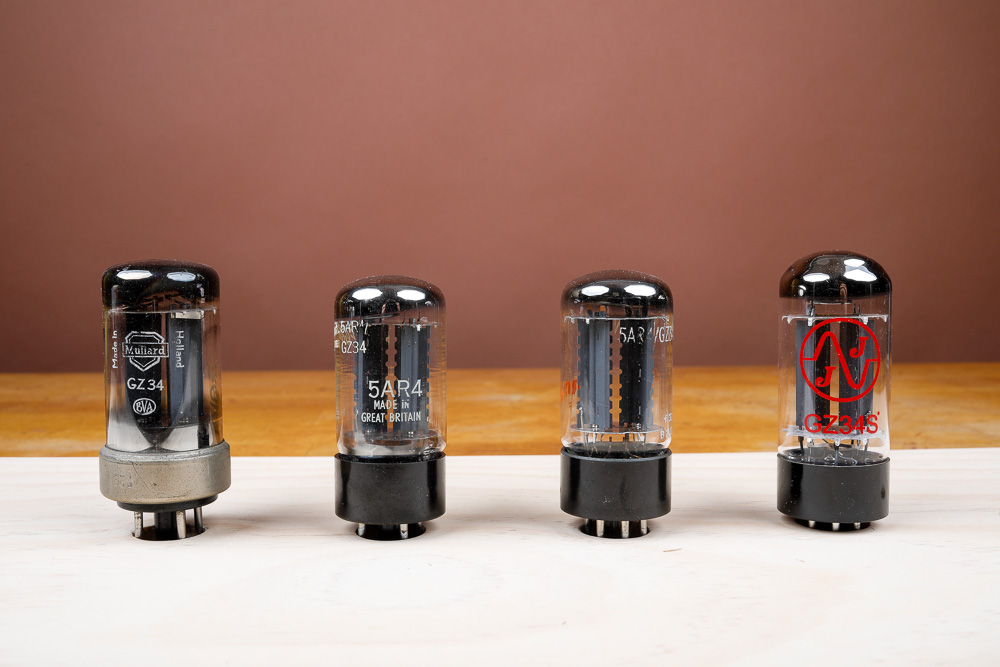
|
||||||||||||||||||
|
The 5AR4. The 5AR4 is one of the most iconic rectifier tubes, with a legendary reputation for its soft start and NOS tube longevity often far beyond expectation. These are a few of the Mullard examples, with the first being the metal base made in Holland tube. This is one of the most well-known tubes of any type. Next is the saw tooth 5AR4 (labeled G.E. and RCA respectively) and finally a modern JJ made in Czech Republic. The older Mullards are hard to beat. My advice is to buy a new testing Mullard while they still exist affordably, and never need that tube again. It may last 10's of thousands of hours, which is a lot, and they sound best. This is an easy win. Spec sheets for the 5AR4 can be found here: here. |
||||||||||||||||||
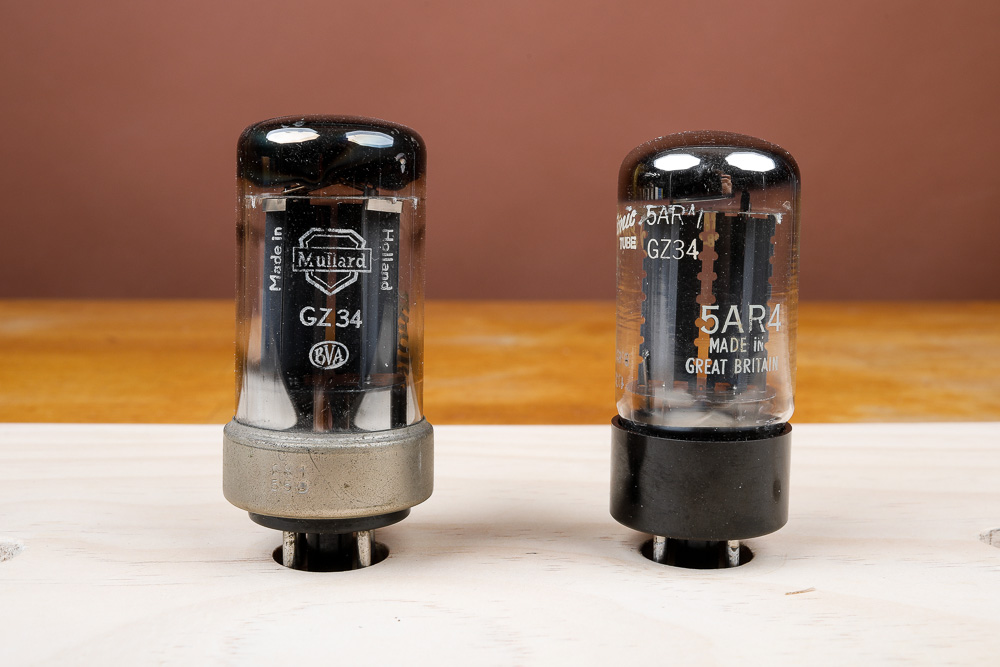
|
||||||||||||||||||
|
The 5AR4. The metal collared Mullard 5AR4 are the most desirable and the most expensive of the tube type, but they reportedly last for many tens of thousands of hours, so in the long run it might be worth the expense. The "saw-tooth" Mullard is a classic tube and is a great place to be in 5AR4. Both of these sound a lot better than any of the new 5AR4 rectifiers I have experience with. Be warned that like most of the European tubes, the chalky white labels on these tubes are very easy to rub off, it takes hardly a brush of the fingers, which makes this particular metal collared 5AR4 all the more rare. |
||||||||||||||||||
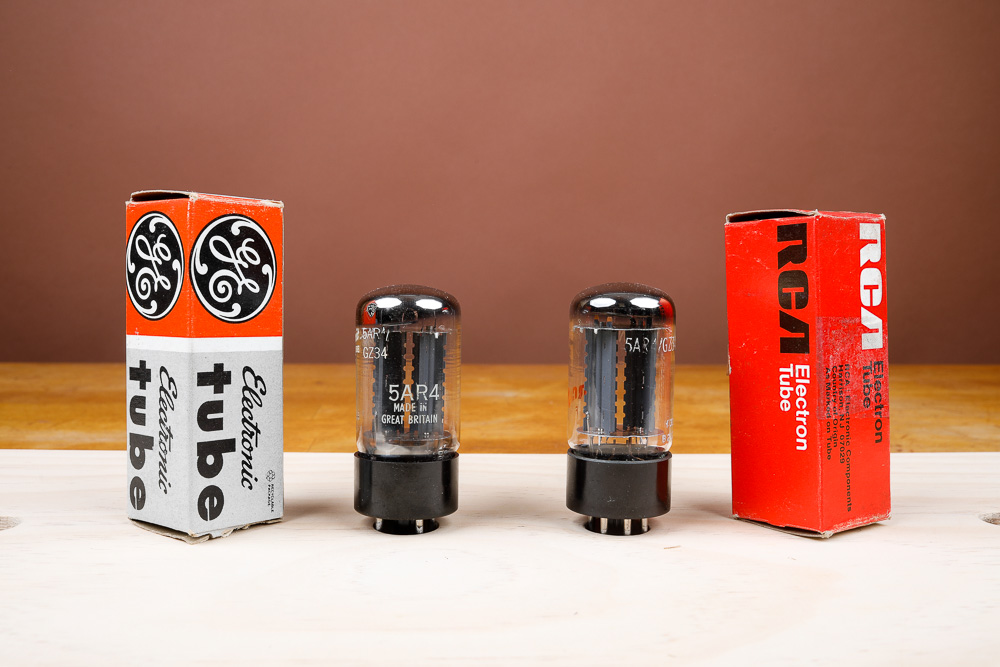
|
||||||||||||||||||
|
The 5AR4. Mullard-made 5AR4 for GE and RCA respectively. These tubes were often found in tube receivers for Scott, Fisher, Eico, etc. |
||||||||||||||||||
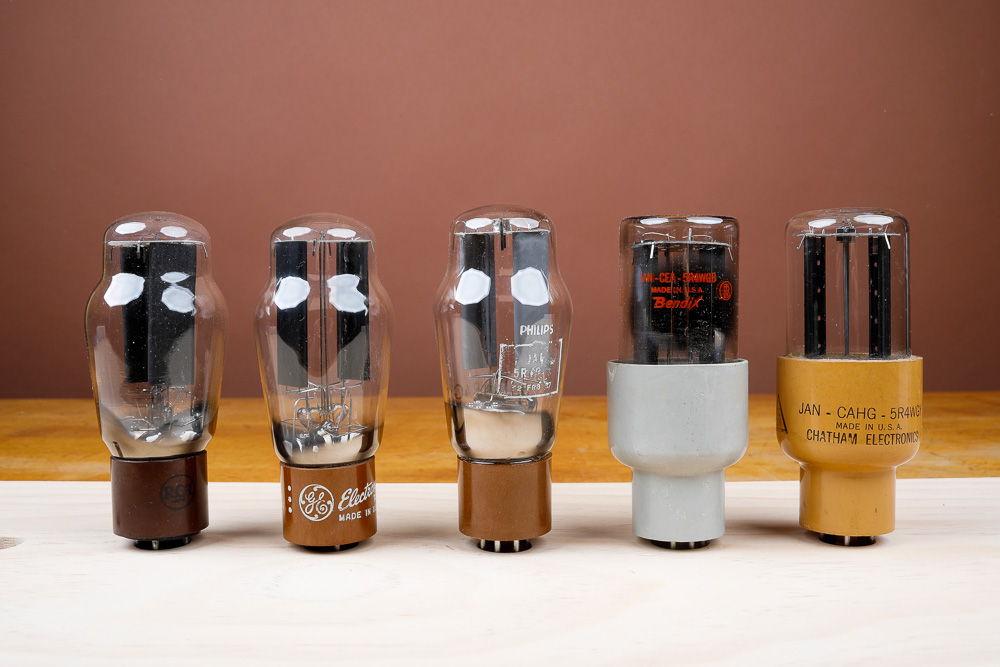
|
||||||||||||||||||
|
The 5R4. The 5R4 is a hefty rectifier that you see in a lot of industrial equipment, particularly the USAF stocks. Here we have an early RCA, a GE, a Philips 5R4GYS which has been all the rage lately, and finally two massive “potato masher” 5R4WGB tubes made for the US Air Force by Bendix and Chatham. All of these are good sounding tubes. Spec sheets for the 5R4 can be found here: here. |
||||||||||||||||||
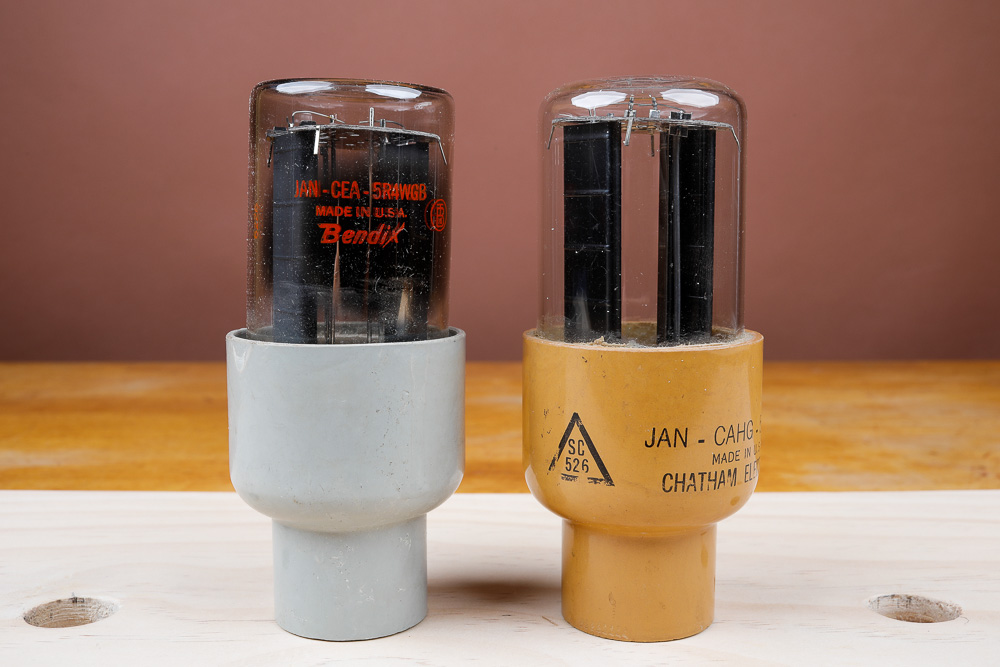
|
||||||||||||||||||
|
The 5R4. A closer look at the Bendix and Chatham 5R4WGB. Talk about overbuilt. These feature thick glass and robust everything, but for some reason pretty much all of these seem to have tilted glass. |
||||||||||||||||||

|
||||||||||||||||||
|
The 274B. A quad of Modern 274B rectifiers. The quintessential 274B is a Western Electric tube, but sadly I have no examples of the original. These are all modern Chinese tubes; a Valve Art 274B, Full Music and Sophia globe 274B, and finally the best sounding of this lot, the Sophia “Aqua” 274B. Spec sheets for the 274B can be found here: here. |
||||||||||||||||||
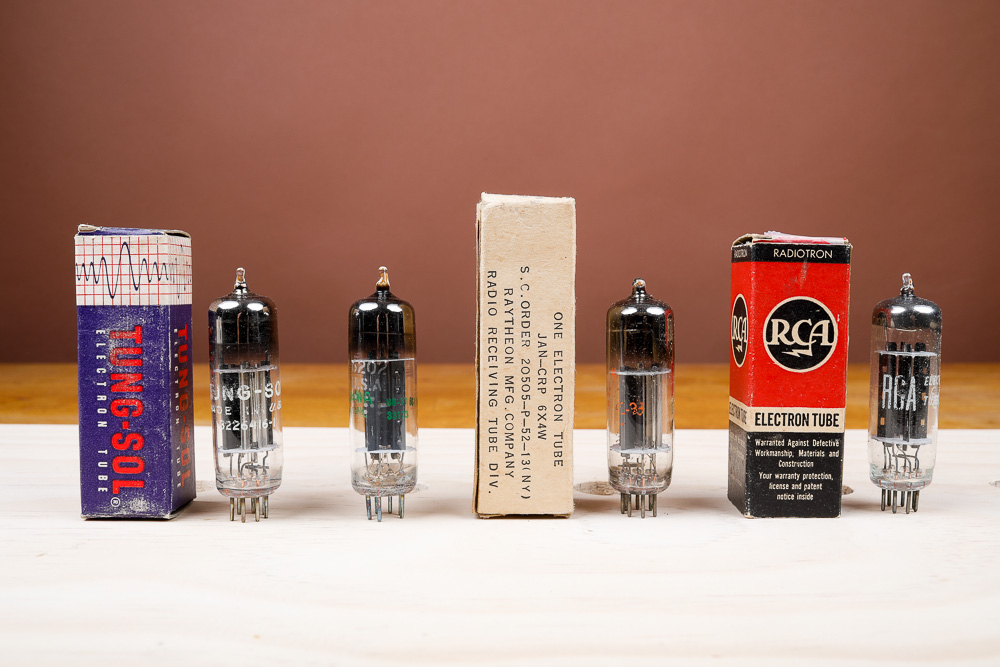
|
||||||||||||||||||
|
The 6X4. Not all rectifiers were large tubes. Here we have an assortment of 6X4 tubes. These are very good sounding tubes, with the white labeled Tung Sol being my favorite. I’ve seen these used mostly in preamps and other equipment, but occasionally you’ll find an amplifier running this rectifier. Spec sheets for the 6X4 can be found here: here. |
||||||||||||||||||
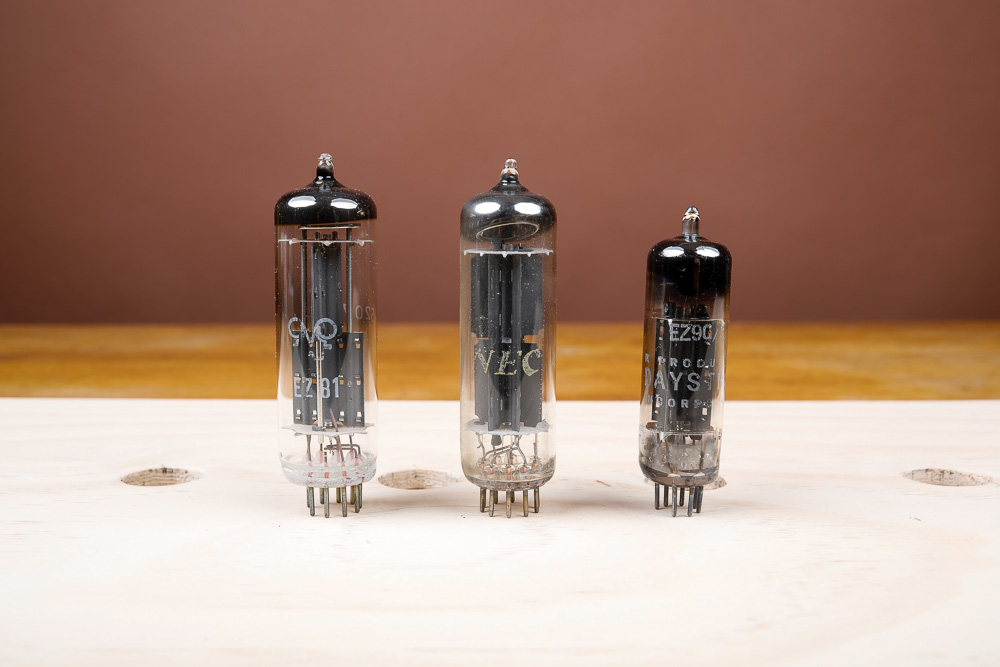
|
||||||||||||||||||
|
More small scale rectifiers. The EZ81 by RFT, a 6CA4 by NEC and an EZ90 from Daystrom. The EZ81 and 6CA4 are the same tube, EZ81 being the European designation. Spec sheets for the EZ81/6CA4 can be found here: here. |
||||||||||||||||||
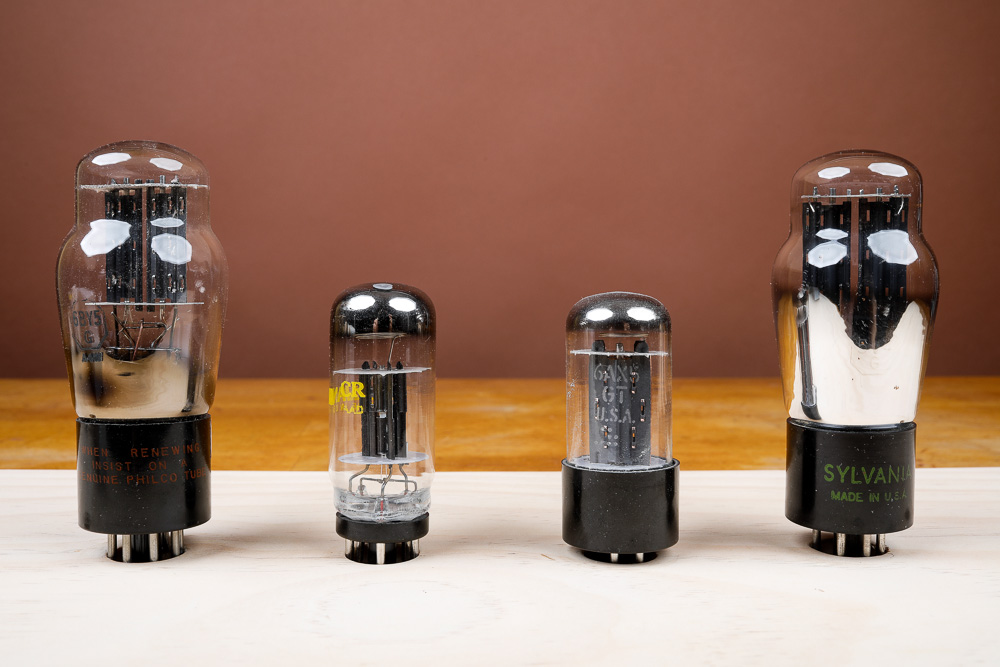
|
||||||||||||||||||
|
Here are a menagerie of less common rectifiers, beginning with the 6BY5, a tube used in early TV sets. Next are a pair of 6AX5 tubes, one a coin base. And finally a 5V4, by Sylvania. |
||||||||||||||||||
 |
|||||||
 |
 |
 |
 |
 |
|||
 |
|||||||
 |
|||||||